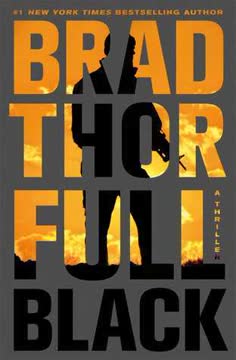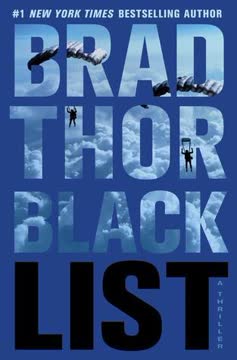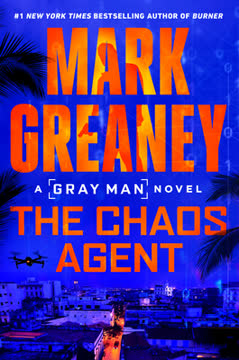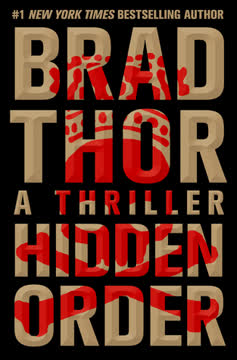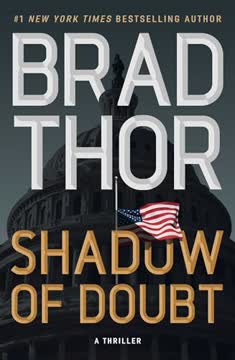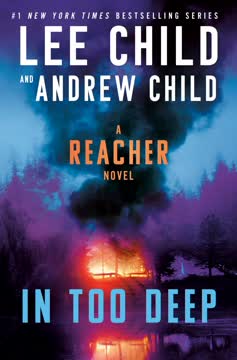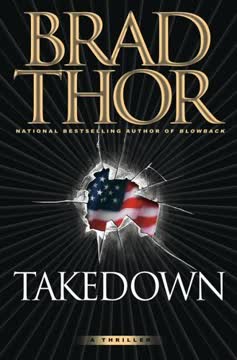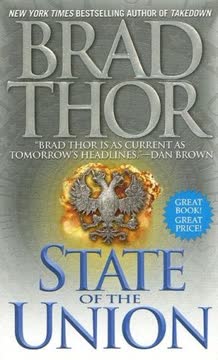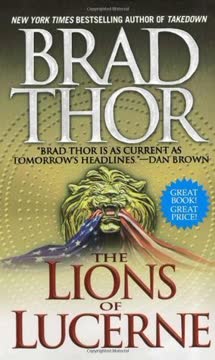Plot Summary
Rapp's Intuition Sparks Urgent Mission
As Memorial Day approaches, Mitch Rapp, a seasoned counterterrorism operative, feels an unsettling tension in Washington, D.C. Despite the city's festive preparations, a surge in CIA intelligence suggests a looming terrorist attack. Rapp's instincts lead him to Afghanistan, where he spearheads a daring raid on an al-Qaeda stronghold. The mission uncovers alarming evidence of a planned nuclear attack on the U.S. capital, setting off a frantic race against time to prevent disaster.
Deadly Secrets in Afghan Village
In a remote Pakistani village, Rapp and his team unearth a trove of incriminating materials, including maps and documents pointing to a nuclear threat. The discovery of these items, hidden in a subterranean room, confirms Rapp's fears of a catastrophic attack. Despite initial success, Rapp remains uneasy, suspecting the operation was too easily executed. His instincts drive him to dig deeper, uncovering a terrifying conspiracy.
Terrorist Threats Loom Over America
As Rapp delves into the intelligence gathered, he uncovers a chilling plot involving a nuclear device aimed at Washington, D.C. The evidence suggests a coordinated effort by al-Qaeda to strike during the Memorial Day celebrations. With time running out, Rapp must navigate political obstacles and bureaucratic red tape to mobilize a response. The stakes are higher than ever, as the nation's security hangs in the balance.
High-Stakes Interrogation Unveils Plot
Rapp's relentless pursuit of the truth leads him to interrogate key suspects, extracting vital information about the planned attack. The interrogation is intense, revealing the involvement of missing Pakistani nuclear scientists and a network of terrorist cells within the U.S. Rapp's methods are unorthodox but effective, as he races against time to piece together the terrorists' plan and prevent a nuclear catastrophe.
Race Against Time in Charleston
Intelligence points to Charleston as a potential entry point for the nuclear device. As Rapp coordinates with various agencies, the urgency of the situation becomes clear. The port of Charleston is placed under intense scrutiny, with federal agents and nuclear experts working tirelessly to locate and secure the device. The operation is fraught with tension, as any misstep could lead to disaster.
Nuclear Threat Uncovered in Port
The search in Charleston yields a shocking discovery: a container holding a nuclear device capable of massive destruction. The revelation sends shockwaves through the intelligence community, confirming the worst fears. With the device in their possession, experts work to assess its stability and disarm it. The situation is precarious, as the nation holds its breath, hoping for a successful resolution to the crisis.
Rapp's Relentless Pursuit of Truth
Mitch Rapp, driven by the urgency of the situation, takes matters into his own hands by extracting al-Adel from jail to interrogate him. Despite the legal and political risks, Rapp's unorthodox methods reveal a chilling truth: a second nuclear bomb is intended for Washington, D.C. This revelation sets off a frantic effort to locate and neutralize the threat, highlighting Rapp's willingness to defy protocol to protect his country.
A Desperate Race Against Time
With the knowledge of a second bomb, Rapp and his allies race against the clock to prevent a catastrophe. The search intensifies as they piece together clues, leading them to suspect the bomb is being transported by boat. The urgency of the situation is palpable, as every second counts in their effort to avert disaster and save countless lives.
Terrorists' Final Stand on Water
Mustafa al-Yamani, weakened by radiation sickness, is determined to carry out his mission. As he and his accomplices navigate the Potomac River, they prepare to detonate the bomb in the heart of Washington, D.C. The terrorists' resolve is unwavering, driven by a fanatical belief in their cause, even as they face certain death.
A High-Stakes Helicopter Chase
In a daring maneuver, Rapp and a CIA team pursue the terrorists by helicopter. As they close in on the boat, Rapp makes a split-second decision to engage, neutralizing the threat with precision. The tense aerial pursuit underscores the high stakes and the critical importance of Rapp's decisive action in preventing a nuclear disaster.
A Last-Minute Decision Saves Washington
With the bomb secured but still active, Rapp faces a critical decision. He opts to transport the device to Mount Weather, a secure facility, where it can be safely contained. The successful containment of the bomb averts a potential catastrophe, showcasing Rapp's ability to make tough decisions under pressure and highlighting the collaborative efforts of the intelligence community.
Rapp's Resolve Amidst Political Chaos
In the aftermath of the crisis, Rapp reflects on the political challenges and bureaucratic obstacles he faces. Despite his frustration with the system, he remains committed to the fight against terrorism. Rapp's determination to continue his mission, despite the personal and professional toll, underscores his unwavering dedication to protecting his country.
Characters
Mitch Rapp
Mitch Rapp is a seasoned CIA operative known for his relentless pursuit of justice and his ability to operate under extreme pressure. His instincts and experience make him a formidable force against terrorism. Rapp's deep-seated drive to protect his country is fueled by personal loss, and he is willing to go to any lengths to prevent another tragedy.
Irene Kennedy
Irene Kennedy is the director of the CIA, known for her sharp intellect and strategic thinking. She plays a crucial role in coordinating the response to the terrorist threat, balancing political pressures with the need for decisive action. Kennedy's leadership is instrumental in navigating the complex web of intelligence and ensuring that Rapp has the support he needs.
Mustafa al-Yamani
Mustafa al-Yamani is a high-ranking al-Qaeda operative, orchestrating a plot to attack the U.S. with a nuclear device. His unwavering commitment to his cause and willingness to sacrifice himself make him a dangerous adversary. Al-Yamani's presence in the U.S. underscores the severity of the threat and the lengths to which terrorists will go to achieve their goals.
Waheed Abdullah
Waheed Abdullah is a member of al-Qaeda involved in the nuclear plot. His capture and subsequent interrogation by Rapp reveal critical details about the attack. Abdullah's role highlights the complexity of the terrorist network and the challenges faced by those working to dismantle it.
Ahmed Khalili
Ahmed Khalili is a young Pakistani involved in the plot, whose interactions with Rapp reveal a more nuanced perspective on the motivations of those drawn into terrorism. His cooperation provides valuable insights into the network's operations and the potential for redemption.
Skip McMahon
Skip McMahon is a seasoned FBI agent who works closely with Rapp to prevent the terrorist attack. His experience and dedication to the mission are evident as he navigates the bureaucratic challenges and political pressures of the investigation. McMahon's collaboration with Rapp highlights the importance of interagency cooperation in counterterrorism efforts.
Paul Reimer
Paul Reimer is a key figure in the Department of Energy, providing critical expertise on nuclear weapons and their potential impact. His insights and analysis are vital in assessing the threat and determining the best course of action to neutralize the bomb. Reimer's role underscores the importance of scientific expertise in addressing complex security challenges.
Plot Devices
Interrogation Techniques
The use of intense interrogation techniques is a key plot device, allowing Rapp to extract crucial information from suspects. These methods highlight the moral complexities and ethical dilemmas faced by operatives in the field, as well as the high stakes involved in counterterrorism efforts.
Intelligence Gathering
The discovery and analysis of intelligence materials, such as maps and documents, are central to the plot. These elements drive the narrative forward, providing the clues needed to piece together the terrorists' plan and prevent disaster. The process of gathering and interpreting this information underscores the challenges of counterterrorism work.
Race Against Time
The looming threat of a nuclear attack creates a sense of urgency that permeates the narrative. The characters are constantly racing against the clock, adding tension and suspense to the story. This plot device emphasizes the high stakes and the pressure faced by those working to protect the nation.
Analysis
"Memorial Day" by Vince Flynn is a high-octane thriller that delves into the complexities of counterterrorism in a post-9/11 world. The narrative underscores the relentless vigilance required to protect national security and the personal sacrifices made by those on the front lines. Through Mitch Rapp's character, the story explores themes of duty, resilience, and the moral ambiguities inherent in the fight against terrorism. The book serves as a stark reminder of the ever-present threats faced by nations and the critical importance of intelligence and decisive action in averting disaster. Flynn's portrayal of the intricate dance between political maneuvering and operational necessity offers a compelling insight into the challenges of modern counterterrorism efforts.
Last updated:
FAQ
Synopsis & Basic Details
What is Memorial Day about?
- Averting Nuclear Catastrophe: Memorial Day by Vince Flynn plunges counterterrorism operative Mitch Rapp into a frantic race against time to prevent a catastrophic nuclear attack on Washington, D.C. The story begins with Rapp's intuition sensing a major threat, leading him to Afghanistan where a daring raid uncovers evidence of a sophisticated al-Qaeda plot.
- Unorthodox Methods, High Stakes: As the plot unfolds, Rapp employs his signature, often brutal, interrogation techniques to extract critical intelligence from captured terrorists, revealing a network of cells and the involvement of rogue nuclear scientists. The narrative follows the intense efforts of various U.S. agencies to track and neutralize the nuclear device, which is eventually located in Charleston, South Carolina.
- Political Intrigue & Moral Dilemmas: Beyond the action, the novel explores the bureaucratic infighting and political maneuvering within Washington, D.C., as Rapp clashes with officials over the best course of action. The climax sees Rapp in a desperate pursuit of a second, active nuclear bomb heading for the capital, culminating in a high-stakes decision that ultimately saves countless lives and the nation's capital.
Why should I read Memorial Day?
- Pulse-Pounding Thriller: Readers seeking a relentless, high-stakes thriller will find Memorial Day delivers non-stop action and suspense. Vince Flynn masterfully builds tension, making every page a race against time to prevent a devastating terrorist attack, keeping you on the edge of your seat until the very end.
- Deep Dive into Counterterrorism: The novel offers a gritty, unvarnished look into the world of counterterrorism, showcasing the moral ambiguities and difficult choices faced by operatives like Mitch Rapp. It explores the clash between legal protocols and the urgent need for decisive action, providing a thought-provoking commentary on national security in a post-9/11 era.
- Insightful Character Dynamics: Beyond the plot, the book delves into the complex psychology of its characters, from Rapp's unwavering resolve to the nuanced motivations of the terrorists. The interplay between Rapp and his allies, particularly Irene Kennedy and Skip McMahon, adds depth, highlighting the personal toll and unwavering commitment required in this dangerous field.
What is the background of Memorial Day?
- Post-9/11 Geopolitical Landscape: Memorial Day is deeply rooted in the anxieties and realities of the post-9/11 world, reflecting the heightened focus on counterterrorism, the threat of WMDs, and the complex relationships with countries like Pakistan and Saudi Arabia. The narrative explicitly references 9/11 as a driving force for Rapp and the nation's security apparatus, shaping the urgency and methods employed.
- Cold War Relics & Nuclear Proliferation: The story leverages the lingering dangers of the Cold War, particularly the existence of unsecured Soviet nuclear material and test sites in former Soviet republics like Kazakhstan. This historical context provides a plausible, terrifying source for the nuclear devices, highlighting the ongoing threat of proliferation and the challenges of securing such materials globally.
- Washington D.C. Bureaucracy & Politics: The novel vividly portrays the intricate, often frustrating, political and bureaucratic environment of Washington, D.C. It delves into the internal conflicts between government agencies (CIA, FBI, DOJ, DHS), the influence of political ambition (Attorney General Stokes, Valerie Jones), and the constant pressure from the media, all of which complicate the urgent mission to protect the nation.
What are the most memorable quotes in Memorial Day?
- "I am a man of my word, Masood. If you ever want to see your children again, you'd better give me a reason to let you live." (Chapter 1): This quote encapsulates Mitch Rapp's ruthless pragmatism and his willingness to cross ethical lines to extract information. It defines his character as an operative who prioritizes results and lives saved over conventional morality, a central theme in Memorial Day analysis.
- "The absolute last thing we need right now is for you to lock down Charleston. Let my people and the feds down there do what they're trained to do. We should give them whatever it is that they need and other than that we should just stay the hell out of their way." (Chapter 37): Spoken by Paul Reimer, this quote highlights the critical tension between bureaucratic interference and operational effectiveness. It underscores the novel's theme of trusting experienced professionals in a crisis, a key element in the themes in Memorial Day discussion.
- "The debate portion of the evening is over. You are an idiot! You have no idea what you are talking about, and you have no idea what it takes to wage this war. Now sit down, and don't interrupt me again or I will throw you out of this room by the scruff of your neck." (Chapter 81): This explosive declaration by Rapp to Peggy Stealey and Valerie Jones perfectly illustrates his contempt for political posturing in the face of existential threats. It's a defining moment for Mitch Rapp's motivations and his frustration with Washington's bureaucracy.
What writing style, narrative choices, and literary techniques does Vince Flynn use?
- Propulsive, Lean Prose: Vince Flynn employs a direct, unadorned writing style that prioritizes action and forward momentum. His prose is lean and efficient, avoiding elaborate descriptions to maintain a high pace, which is crucial for a Memorial Day thriller analysis. This choice immerses the reader directly into the urgent unfolding of events.
- Multiple Perspectives & Shifting POVs: The narrative frequently shifts between various characters' perspectives—from Mitch Rapp's intense field operations to Irene Kennedy's strategic oversight and even the terrorists' internal thoughts. This technique provides a comprehensive view of the crisis, building suspense and allowing readers to understand the multifaceted nature of the threat and response, a key aspect of Memorial Day narrative choices.
- Foreshadowing & Dramatic Irony: Flynn skillfully uses subtle foreshadowing, such as early mentions of financial market anomalies or Rapp's unease after the initial raid, to build anticipation. Dramatic irony is also prevalent, where the reader is privy to information (like the existence of a second bomb) that key characters are not, intensifying the Memorial Day suspense and emotional impact.
Hidden Details & Subtle Connections
What are some minor details that add significant meaning?
- Al-Yamani's Prosthetic Leg: The detail of Mustafa al-Yamani's prosthetic leg (Chapter 14) is not just a character quirk but a crucial plot point explaining his unconventional entry into the U.S. by boat, bypassing airport security. This subtle detail highlights the terrorists' adaptive strategies and the specific vulnerabilities they exploit, enriching the Mustafa al-Yamani analysis.
- The "Facility" as a Cold War Relic: The CIA's secret interrogation site, referred to only as "the Facility" (Prelude), is described as a relic from the Cold War, intentionally designed for sensory deprivation. This background detail subtly connects the modern war on terror to historical intelligence operations, suggesting a continuity of methods and a darker, less transparent side of national security, a key element in CIA operations explained.
- Pat Holmes's Political Savvy: Pat Holmes, the DNC Chairman, is depicted as remembering everyone's name and being gregarious (Chapter 9, 60). This seemingly minor social detail is crucial to understanding his political power and influence, enabling him to broker deals and manipulate situations, including the potential replacement of the Vice President, a subtle insight into Washington D.C. political dynamics.
What are some subtle foreshadowing and callbacks?
- Financial Market Anomalies: Early in the novel, Irene Kennedy notes "strange trends in the financial and currency markets" (Chapter 4) and flagged accounts making moves that suggest the U.S. economy is "about to take a hit." This subtly foreshadows the economic devastation intended by the terrorists' multi-pronged attack, linking financial intelligence to the physical threat, a key aspect of Memorial Day foreshadowing.
- Rapp's Wife's Absence: Rapp's wife, Anna, leaving for her family's cabin in Wisconsin (Chapter 2) is initially presented as a simple detail. However, it subtly foreshadows the immense personal risk Rapp faces and the emotional distance he maintains from his personal life to protect it, making her eventual call in the epilogue a poignant callback to his sacrifices, central to Mitch Rapp's character development.
- The Caspian Sea Map: The discovery of a map of the Caspian Sea region in the al-Qaeda camp (Chapter 28) initially puzzles Rapp. This detail subtly foreshadows the later revelation that the nuclear material originated from a Soviet test site on the northern edge of the Caspian, connecting disparate pieces of intelligence and highlighting the global reach of the threat, a crucial element in Memorial Day intelligence gathering analysis.
What are some unexpected character connections?
- Mohammed Ansari's CIA Link: The cab driver, Mohammed Ansari, who aids al-Yamani, is revealed to have immigrated to the U.S. with the help of the CIA after fighting the Soviets in Afghanistan (Chapter 70). This unexpected connection highlights the complex and often unintended consequences of past geopolitical interventions, showing how former allies can become adversaries, a deep dive into Mohammed Ansari's motivations.
- Pat Holmes and Peggy Stealey's Past Affair: The revelation of a past "torrid" affair between DNC Chairman Pat Holmes and Peggy Stealey (Chapter 3) adds a layer of personal history and unspoken power dynamics to their professional interactions. This connection explains their unique rapport and Stealey's career trajectory, offering a subtle insight into Peggy Stealey's character analysis and the transactional nature of Washington relationships.
- Rapp's Mentorship by Thomas Stansfield: Rapp's recruitment into the covert Orion Team by Thomas Stansfield, a Cold War veteran (Chapter 18), establishes a deep, almost paternal, connection. This mentorship explains Rapp's unorthodox methods and his unwavering commitment, linking his modern counterterrorism efforts to a legacy of clandestine operations and providing context for Mitch Rapp's origins.
Who are the most significant supporting characters?
- Bobby Akram, the Master Interrogator: Akram, a Pakistani immigrant and devout Muslim, is the CIA's top interrogator (Prelude, Chapter 51). His unique cultural and linguistic skills, combined with his clinical detachment, make him indispensable in extracting truth from terrorists. He represents the nuanced approach to intelligence gathering, contrasting with Rapp's more brutal methods, and is crucial for Bobby Akram's role explained.
- Paul Reimer, the Nuclear Expert: As the head of the Department of Energy's Nuclear Emergency Support Teams (NEST), Reimer provides critical scientific and technical expertise throughout the crisis (Chapter 27, 41, 90). His calm, precise assessments and strategic advice are vital in understanding and neutralizing the nuclear threat, highlighting the importance of specialized knowledge in counterterrorism operations.
- Peggy Stealey, the Ambitious DOJ Official: Stealey, the Deputy Assistant Attorney General in charge of counterterrorism, embodies the political and legal obstacles Rapp faces (Chapter 3, 50, 57). Her ambition and adherence to legal protocol, even in crisis, create significant friction, showcasing the bureaucratic challenges and the clash between law enforcement and intelligence approaches in Washington D.C. politics.
Psychological, Emotional, & Relational Analysis
What are some unspoken motivations of the characters?
- Rapp's Quest for Retribution: While Rapp explicitly states his mission is to protect innocent lives, his relentless, often brutal, methods are implicitly fueled by a deep-seated desire for retribution for the Lockerbie bombing that killed his fiancée (Chapter 18). This unspoken motivation drives his extreme actions and his contempt for bureaucratic delays, central to Mitch Rapp's motivations explained.
- Al-Yamani's Desire for Legacy: Mustafa al-Yamani, despite his radiation sickness, is driven by an unspoken need to achieve a glorious martyrdom and ignite a global jihad (Chapter 14, 53, 86). His willingness to sacrifice himself and others, and his meticulous planning, stem from a desire to leave a lasting legacy in the "thousand-year-old battle" against infidels, a key insight into Mustafa al-Yamani's psychology.
- Attorney General Stokes's Presidential Ambition: Martin Stokes's actions, particularly his initial handling of the Charleston prisoners and his political maneuvering, are subtly motivated by his aspiration for the White House (Chapter 3, 43, 57). His concern for public perception and his willingness to align with Peggy Stealey's legalistic approach are unspoken strategies to advance his political career, a crucial aspect of political motivations in Memorial Day.
What psychological complexities do the characters exhibit?
- Rapp's Moral Ambiguity: Mitch Rapp grapples with the psychological toll of his work, acknowledging that he is an "assassin" (Prelude) and that his methods are "barbaric" to many (Chapter 20). His internal conflict between the necessity of his brutal actions and the ideals of a civilized society creates a complex psychological profile, exploring the dark side of heroism in Mitch Rapp's psychological analysis.
- Khalili's Indoctrination and Doubt: Ahmed Khalili, the young Pakistani scientist, exhibits the psychological complexity of indoctrination. Initially a devout Wahhabi, his fear and Rapp's questioning sow seeds of doubt about his religious instructors' interpretations (Chapter 21). This internal struggle highlights the psychological manipulation inherent in radicalization and the potential for breaking through it, a key element in Ahmed Khalili's emotional journey.
- Al-Yamani's Fanatical Resolve Amidst Decay: Mustafa al-Yamani's psychological state is a paradox: unwavering fanatical resolve in the face of severe physical decay from radiation sickness (Chapter 14, 53, 74). His ability to push through extreme pain, driven by a vision of "glorious vengeance," showcases a mind completely consumed by his mission, offering a chilling insight into terrorist psychology explained.
What are the major emotional turning points?
- Rapp's Execution of Al-Houri: The execution of Ali Saed al-Houri by Rapp (Chapter 20) is a brutal emotional turning point, not just for the narrative but for Rapp himself. It solidifies his commitment to extreme measures and sends a clear, terrifying message to the other prisoners, marking a shift from conventional interrogation to raw, visceral coercion, a pivotal moment in Mitch Rapp's emotional analysis.
- The Discovery of the Second Bomb: The revelation from Ahmed al-Adel that a second nuclear bomb is headed for Washington, D.C. (Chapter 81) is a major emotional shockwave. It shatters any complacency and elevates the stakes to an unimaginable level, creating a desperate urgency that drives the final act of the story and intensifies the Memorial Day plot twists.
- President Hayes's Decision to Sacrifice Mount Weather: President Hayes's agonizing decision to use Mount Weather as a containment site for the active nuclear bomb (Chapter 93) is a profound emotional turning point. It signifies his acceptance of extreme measures to protect the greater population, showcasing the immense burden of leadership and the difficult choices made under pressure, a key aspect of President Hayes's leadership analysis.
How do relationship dynamics evolve?
- Rapp and Kennedy's Deep Trust: The relationship between Mitch Rapp and Irene Kennedy evolves into one of profound, almost unspoken, trust and mutual respect. Despite Kennedy's initial attempts to rein in Rapp, she ultimately becomes his staunchest advocate, understanding his methods are necessary (Chapter 2, 55). Their dynamic highlights a partnership built on shared commitment and a willingness to bend rules for the greater good, central to Rapp and Kennedy's relationship.
- McMahon's Shifting Allegiance to Rapp: Skip McMahon, initially wary of Rapp's unorthodox approach, gradually develops a deep respect and even complicity with him. His decision to "break the law" by aiding Rapp in extracting al-Adel (Chapter 77) marks a significant evolution, demonstrating his prioritization of national security over bureaucratic adherence, a key aspect of Skip McMahon's character arc.
- Al-Yamani and Mohammed Ansari's Betrayal: The relationship between Mustafa al-Yamani and Mohammed Ansari, initially based on shared history and trust, ends in betrayal and murder (Chapter 64, 74). Mohammed's wavering commitment to the cause, contrasted with al-Yamani's ruthless fanaticism, highlights the corrosive nature of extremism and the ultimate expendability of individuals in the terrorist's eyes, a tragic evolution in terrorist relationship dynamics.
Interpretation & Debate
Which parts of the story remain ambiguous or open-ended?
- The Fate of the Charleston Prisoners' Lawyer: The story leaves the ultimate fate and reaction of Tony Jackson, the "Mouth of the South" lawyer for the Charleston prisoners, ambiguous (Chapter 76, 78). While Rapp dismisses him with a threat, the potential for a media firestorm and legal challenge remains open-ended, prompting debate on the long-term consequences of Rapp's actions and the legal system's response, a key point for Memorial Day legal implications.
- The Full Extent of Saudi Royal Family Complicity: While Rapp explicitly states the Crown Prince "profits from his business dealings with America" and would "gladly round up al-Adel's family and begin torturing them" (Chapter 78), the full extent of the Saudi royal family's complicity or knowledge of terrorist financing remains somewhat ambiguous. This leaves room for interpretation regarding the deeper geopolitical corruption and the compromises made by the U.S., a crucial aspect of Memorial Day geopolitical analysis.
- Rapp's Future in the CIA: The epilogue leaves Rapp's long-term future in the CIA open-ended, with him demanding "carte blanche" and threatening to quit if his demands aren't met (Epilogue). While Kennedy offers concessions, the question of whether Rapp can truly reconcile his methods with the bureaucratic system, or if he will eventually leave, remains a central interpretive debate for Mitch Rapp's future.
What are some debatable, controversial scenes or moments in Memorial Day?
- Rapp's Interrogation of Colonel Haq: The prelude, detailing Rapp's brutal interrogation of Colonel Masood Haq, including physical violence and threats against his children, is highly controversial. This scene sparks debate about the effectiveness and morality of torture, forcing readers to confront the ethical lines crossed in the name of national security, a central point in Memorial Day interrogation ethics.
- The Execution of Al-Houri: Rapp's cold-blooded execution of Ali Saed al-Houri (Chapter 20) in front of other prisoners is a shocking and highly debatable moment. It challenges conventional notions of justice and due process, raising questions about extrajudicial killings and the psychological impact on the perpetrator, a key discussion point for Mitch Rapp's controversial actions.
- The Decision to Use Mount Weather as a Bomb Site: The National Security Council's decision to detonate a nuclear bomb inside Mount Weather, a multi-billion dollar government facility (Chapter 93), is a controversial strategic choice. It highlights the extreme measures considered in a crisis and the utilitarian calculus of sacrificing infrastructure to save lives, prompting debate on the value of human life versus national assets in Memorial Day ethical dilemmas.
Memorial Day Ending Explained: How It Ends & What It Means
- The Second Bomb's Containment: The climax of Memorial Day sees Mitch Rapp successfully intercepting the second nuclear bomb, which was being transported by boat on the Potomac River towards Washington, D.C. After a tense pursuit and neutralizing the terrorists, Rapp, in coordination with Paul Reimer and President Hayes, makes the critical decision to transport the armed device by helicopter to Mount Weather, a hardened underground government facility. The bomb detonates within Mount Weather, which successfully contains the blast and fallout, averting a catastrophic nuclear attack on the capital. This is a crucial part of the Memorial Day ending explained.
- Rapp's Ultimatum and Future: In the aftermath, Rapp, exhausted and disillusioned by the political infighting and bureaucratic obstacles, issues an ultimatum to Irene Kennedy. He demands "carte blanche" to hunt down terrorists without interference from the White House or Justice Department, threatening to quit and expose political machinations if his demands are not met. Kennedy, recognizing his indispensability and the president's shaken resolve, agrees to some of his terms, including the removal of Valerie Jones and Peggy Stealey. This sets the stage for Rapp's continued, albeit contentious, role in counterterrorism, a key aspect of Mitch Rapp's motivations.
- The Enduring Threat and Moral Compromises: The ending signifies a victory, but not a definitive one. The terrorists are thwarted, but the underlying threat of global jihad remains, and Rapp acknowledges they "will come at us again." The novel concludes with a stark reminder of the moral compromises and brutal force required to wage this war, emphasizing that there is "no walking away from this fight." It underscores the idea that while immediate disaster was averted, the long-term struggle against terrorism is complex, ongoing, and demands unconventional, often ethically challenging, responses, providing deep insight into themes in Memorial Day.
Review Summary
Memorial Day receives high praise from readers, with an average rating of 4.33/5. Fans applaud Flynn's fast-paced storytelling, intense action scenes, and the compelling character of Mitch Rapp. Many appreciate the political intrigue and realistic portrayal of counterterrorism efforts. Some readers note the book's right-wing leanings and occasionally predictable plot, but most find it an engaging and thrilling read. The novel's exploration of nuclear terrorism and government bureaucracy resonates with many, making it a standout in the Mitch Rapp series.
Mitch Rapp Series Series
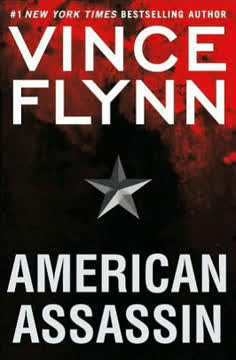
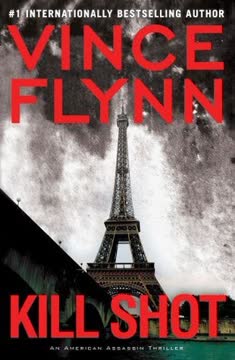
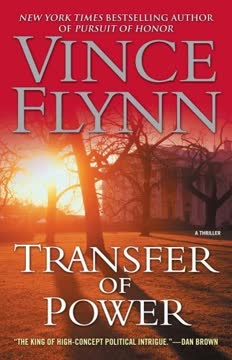
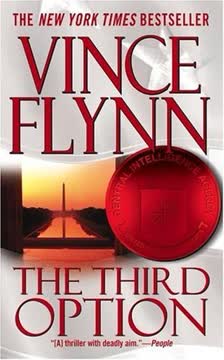
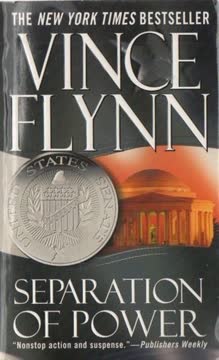
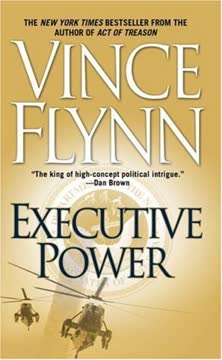
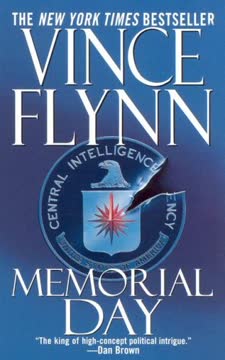
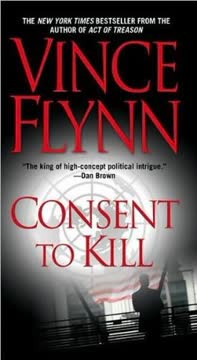
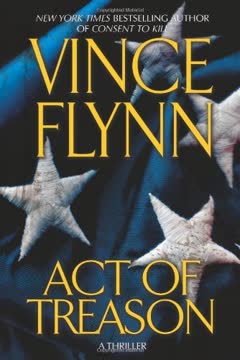
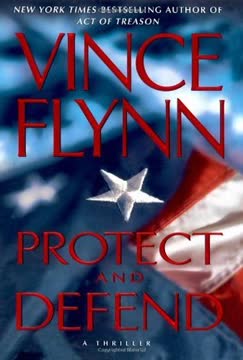

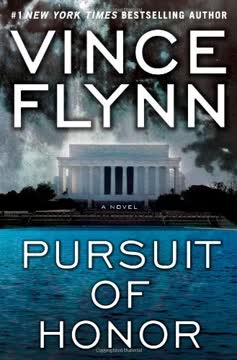
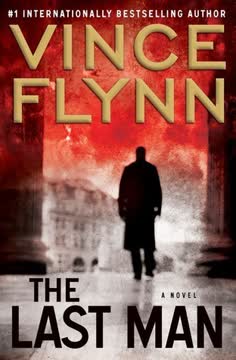
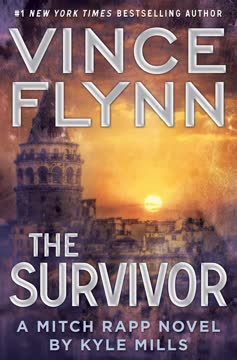
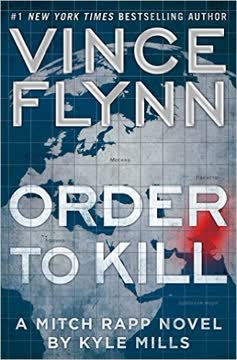
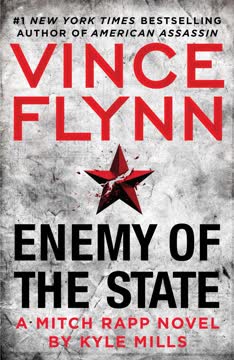
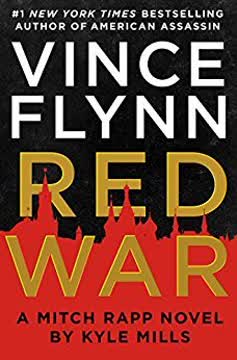
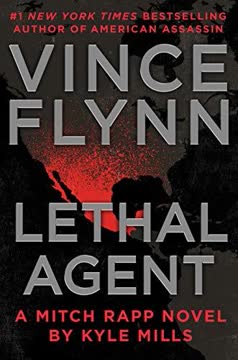
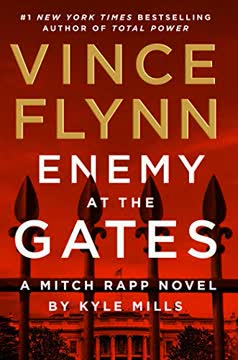
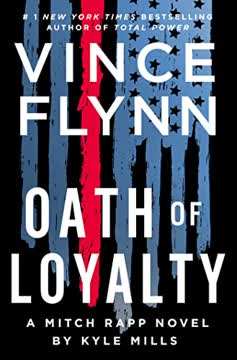
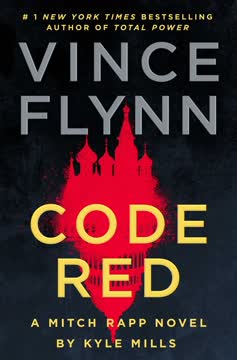
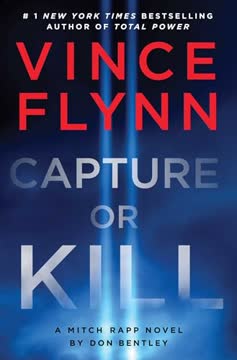
Similar Books
Download PDF
Download EPUB
.epub digital book format is ideal for reading ebooks on phones, tablets, and e-readers.
